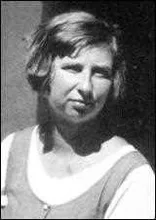Introducción
En Wikipedia se escribió:Annie Reich (née Pink) (1902–1971) was a Viennese-born psychoanalyst who became a leading analytic theorist in post-war New York.
Life
Born Annie Pink to a wealthy Jewish family, Annie Reich took a degree in medicine from 1921–1926; became interested in psychoanalysis at the same time; began an analysis with Wilhelm Reich (interrupted by their marriage in 1922); continued analysis with Hermann Nunberg; and also had a training analysis with Anna Freud.
She had two daughters—Eva Reich and Lore Reich Rubin—with Reich before their separation in 1933. Thereafter Annie Reich moved with her children to Prague, to become part of the circle around Otto Fenichel; before emigrating to the United States on the eve of World War II.
Theoretical contributions
After an early publication on the successful treatment of a paranoid (1936), Reich produced a study of female sexual submission in terms of identification with the partner's superior body (1940). She returned to the theme after the war, with a study of narcissistic object choice in women, which she saw as driven by what she called 'narcissistic want', in turn the product of childhood narcissistic injury. A lack of self-esteem was met by identification with a grandiose male partner.
Reich explored another route for dealing with self-esteem issues in a study of grotesque humour. By caricaturing her own body flaws, the protagonist was able simultaneously to attack those around her. In this way she was able to fend off temporarily the condemnation of her own strict superego, in a struggle that had however to be ceaselessly renewed, and whose occasional failure led to deep depression. Reich's interest in such early damage to self-esteem makes her work a bridge between ego psychology and self psychology.
Reich also made contributions to the technique of psychoanalysis, specifically on countertransference and on the termination of therapy. She restated the classical view of countertransference as the projection of past attitudes and feelings of the analyst on to the patient, in opposition to the interactive view then coming to the fore of countertransference as revealing something about the patient: the methodological challenge she presented of distinguishing between the two still remains cogent. She also warned that, even after analysis of the transference, the analyst will still appear "as a person endowed with special power, special intelligence and wisdom... as partaking in the omnipotence which the child attributes to the parents", a problem only the lapse of time post-termination may cure.
Bibliografía compilada (fuente)
Ensayo
 Reich, A. - Si tu hijo te pregunta. Manual de educación sexual para padres demó...grama, 1976].pdf [833.0 Kb]
Reich, A. - Si tu hijo te pregunta. Manual de educación sexual para padres demó...grama, 1976].pdf [833.0 Kb] 
Relacionado:



